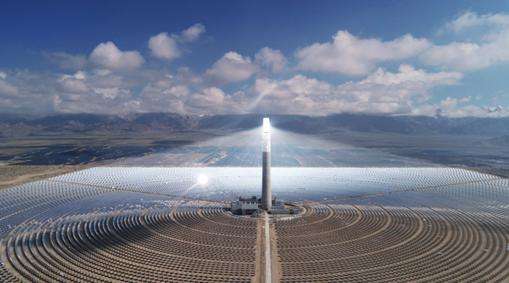Differences in definition, differences in categories, differences in fields of application, etc.
1. Definition difference: New energy refers to renewable energy developed and used based on new technologies, including solar energy, wind energy, biomass energy, hydropower, geothermal energy and ocean energy. Energy, etc. ; Renewable energy refers to energy that can be continuously regenerated and sustainably used in nature, including solar energy, wind energy, hydropower, biomass energy, energy geothermal, etc.
2. Type Differences: New energy includes solar energy, wind energy, hydroelectric energy, geothermal energy, marine energy, etc. ; , geothermal energy, etc. wait.
3. Differences in areas of application: new energiesare mainly used in electric power, transportation, construction, industry and other fields;
Solar energy generally refers to the radiant energy of sunlight. The nuclear fusion reaction of “hydrogen” into “helium” inside the sun continuously releases enormous energy and continuously radiates energy into the universe. This energy is solar energy. This nuclear fusion reaction inside the Sun can last billions or even tens of billions of years. The radiation power emitted by the sun into space is 3.8 x 10^23 kW, of which 1/2 billion reaches the earth's atmosphere. 30% of the solar energy that reaches the earth's atmosphere is reflected by the atmosphere, 23% is absorbed by the atmosphere and the rest reaches the earth's surface with a power of 80,000 billion kW, i.e. -say energy as the sun. shines on the earth every secondnde is equivalent to burning 5 million of the heat released by tons of coal. On average, the energy received per square meter per minute outside the atmosphere is approximately 1,367 W. Solar energy in the broad sense is the source of many energies on earth, such as wind energy, l chemical energy, potential energy of water, etc. Solar energy in the strict sense is limited to the direct conversion of photothermal, photoelectric and photochemical energy from solar radiation. Bioenergy (also known as biomass energy) uses organic matter (such as plants, etc.) as fuel to generate energy through technologies such as gas harvesting, gasification ( transformation of solids into gas), combustion and digestion (wet waste only). Done correctly, biomass is also a valuable renewable energy source, but it depends on how the biomass fuelis generated. Natural gas refers to all gases naturally occurring in nature, including gases formed by various natural processes in the atmosphere, hydrosphere, biosphere and lithosphere. The commonly used definition of “natural gas” has long been a narrow definition from an energy perspective. It refers to a mixture of hydrocarbons and non-hydrocarbon gases naturally contained in the formation, found primarily in oil and gas fields. coal bed gas and methane, mud volcano gas and biogenic gas. Natural gas can be divided into two types: associated gas and non-associated gas. Oilfield gas that accompanies crude oil and is produced at the same time as crude oil is called associated gas. It includes natural gas from pure gas fields and natural gas from gas condensate fields, both of which exist in a gaseous state in the formation. Oncethe natural gas present in the condensate gas field flows out of the wellhead of the formation, as the pressure and temperature decrease, there are two phases gas and liquid, the gas phase is the natural gas coming from of the gas to condensate field and the liquid phase is the condensate liquid, called oil to condensate. Nuclear energy (or atomic energy) is the energy released by the nucleus of an atom by converting its mass, according to Albert Einstein's equation E=mc?, where E=energy, m=mass and c =the speed constant of light. . Nuclear energy is released by one of three nuclear reactions: 1. Nuclear fission, opening the binding force of atomic nuclei. 2. Nuclear fusion, fusion of atomic particles. 3. Nuclear decay, a much slower natural form of fission. Geothermal energy is natural thermal energy extracted from the earth's crust. This energy comes fromlava inside the earth and exists in the form of heat. This is the energy that causes volcanic eruptions and earthquakes. Temperatures in the Earth's interior reach 7,000 degrees Celsius, but at depths of 80 to 100 kilometers, the temperature drops to between 650 and 1,200 degrees Celsius. Through the flow of groundwater and the rise of lava to the earth's crust, 1 to 5 kilometers above the ground, heat can be transferred closer to the ground. Hot lava heats nearby groundwater and the heated water eventually seeps out of the ground. The simplest and most cost-effective way to use geothermal energy is to directly access and extract energy from these heat sources. Geothermal energy is a renewable resource. Among the many new energy sources, hydrogen will become the most ideal energy source of the 21st century. Indeed, by burning the sameme weight of coal, gasoline and hydrogen, hydrogen produces the most energy, and its combustion product is water, without ash and waste gas, and will not pollute the environment while the combustion of coal and oil into product; are carbon dioxide and sulfur dioxide, which produce the greenhouse effect and acid rain respectively. Coal and oil reserves are limited, but hydrogen is mainly stored in water. The only product after combustion is water. Hydrogen can be produced continuously and will never run out. Hydrogen is a colorless gas. Burning one gram of hydrogen can release 142 kilojoules of heat, or three times the calorific value of gasoline. Hydrogen is particularly light. It is much lighter than gasoline, natural gas and kerosene, so it is easy to transport and transport. It is the most suitable fuel for high-speed transportationsuch as aerospace and aviation. Hydrogen can burn in oxygen, and the temperature of the hydrogen flame can reach 2500°C. Therefore, people often use hydrogen to cut or weld steel materials.














